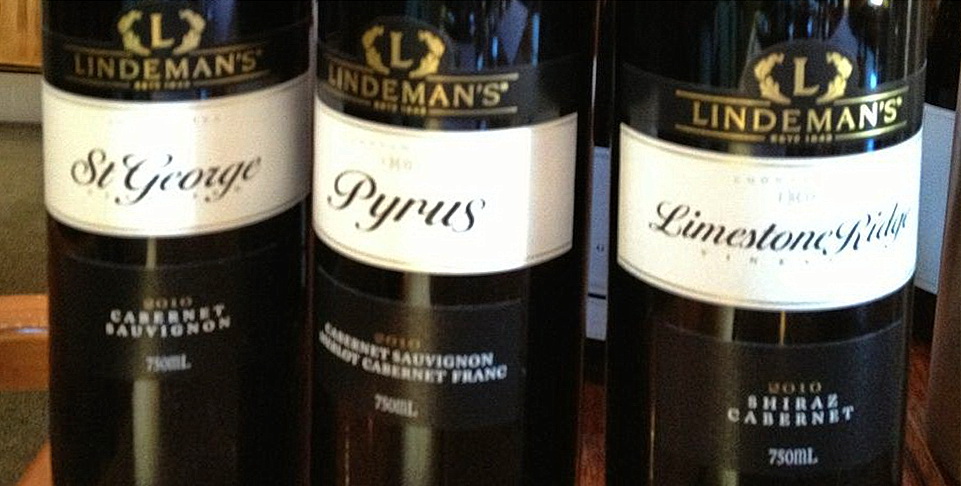Today I talked with Ray Kidd, one of the pioneers of the Australian wine industry in the post war years. Ray was born in 1926 and ran Lindemans from 1962 to 1986. He doesn’t sound like a man going on 90; the conversation was pretty lively from his end. Thanks to my friends Chris Anstee, Peter Bourne and Paul Ferman who suggested that I talk to Ray, and provided me with a contact number.
After writing a review of Ian Hickinbotham’s autobiography, and corresponding with him, I realised that we have very few of these icons left – I’m talking about wine industry greats who spanned the five decades from 1950 to the new millennium. Peter Lehmann died last year, Max Schubert has been gone for 2 decades. I’d love to interview John Vickery who is in very good shape.
John Vickery is to Riesling what Max Schubert was to Shiraz down under. He made Rieslings in the sixties and seventies under the Leo Buring label that still serve as benchmarks today. Yes, some of them have lasted that long. John Vickery was a genius with Riesling but few people know that he made the reds for Lindemans’ Coonawarra operations from 1974 to 1980.
57 Varieties
In the nineties, with Lindemans sold to Heinz and CEO Ray retired, John was making Riesling for Richmond Grove. It used to be a Hunter Valley winery that was acquired by Orlando Wyndham who moved the cellar door to Chateau Leonay in the Barossa. John retired in 2005.
Anyhow, when I first spoke to Ray Kidd I discovered he wasn’t connected to the internet, nor did he have family members who were. I thought I’d better send him the piece I wrote last year: Lindemans – Death By a Thousand Cuts to give him an idea of where I was coming from. Ray said he was very comfortable with the overall thrust of the piece but wanted to correct a few details.
That meant he spent the first half hour of our interview today telling me the bits I’d got wrong. Sunshine vineyard wasn’t sold by the Philip Morris cost accountants, nor was Ben Ean. Sunshine was destroyed by floods, and some higher slopes of Ben Ean were sold to developers years later. The problem is that you rely on second hand reports when you weren’t there.
Ben Ean Moselle
The really interesting thing that came out of this talk with Ray Kidd was this: Lindemans was always a table wine company first, even in the dark old days of dingy wine bars serving cheap port to shady customers. Lindemans was making quality fortified wines at Corowa, but the bulk of its business was making table wine in the Hunter Valley. In 1950, they were the 11th biggest wine company in NSW according to Ray.
Then in 1953, Ray came upon the idea of Ben Ean Moselle. Hamilton’s Ewell was the model for that, a slightly sweet wine designed to move punters used to cheap fortifieds across to table wines. Ben Ean was a roaring success, and it was made from Semillon, Verdelho, white Muscat/Frontignan and whatever else was available at the time. Ray made the wine, and the wine made Lindemans.
As table wine became more fashionable, Lindemans found itself short of vineyards, so Ray bought Leo Buring in 1962, and then Rouge Homme in 1966, and some more land in Coonawarra which produced the Coonawarra Trio he is so proud of.
 Andrew Caillard writes that ‘Lindemans Coonawarra Cabernet Sauvignon and Cabernet blends – St George Vineyard Cabernet Sauvignon, Limestone Ridge Vineyard Cabernet Sauvignon Shiraz and Pyrus Cabernet Sauvignon Merlot Malbec – were once regarded as the pinnacle of Coonawarra personality and prestige.
Andrew Caillard writes that ‘Lindemans Coonawarra Cabernet Sauvignon and Cabernet blends – St George Vineyard Cabernet Sauvignon, Limestone Ridge Vineyard Cabernet Sauvignon Shiraz and Pyrus Cabernet Sauvignon Merlot Malbec – were once regarded as the pinnacle of Coonawarra personality and prestige.
They were some of the first labelled single vineyard wines. However various factors including time, fashion and complacency have worked against their reputation. The globalisation of the brand name also has not really helped. The ‘Coonawarra Trio’, as they are now called, seem lost in such a commercially focussed portfolio. Indeed it is quite surprising they exist at all.’
Kim

